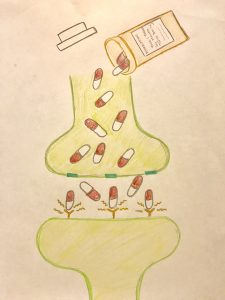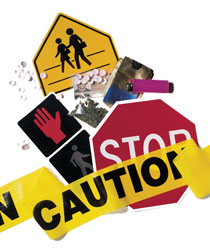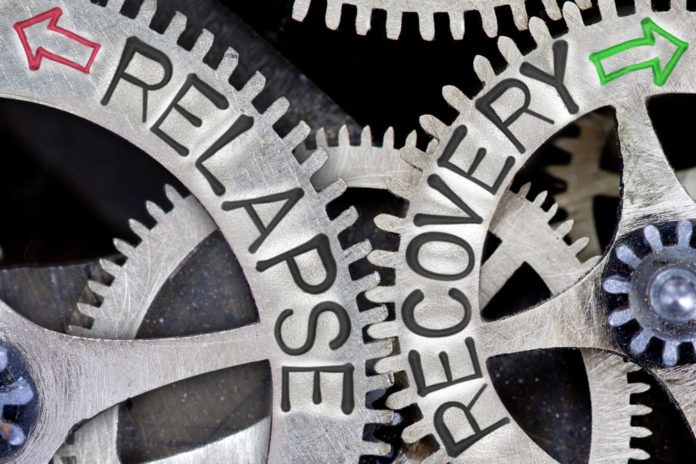Relapse prevention skills are important for living a happy life in recovery. In order to learn these prevention skills, one must know what the risk factors for relapse are. Relapse can occur at any stage of the recovery process and is considered a normal part of the recovery process. It is believed that 40-60% of addicts relapse at least once during their recovery. In order to understand relapse risk factors, it is important to understand why people become addicted in the first place.
 Why Do People Become Addicted to Drugs?
Why Do People Become Addicted to Drugs?
During drug use, the reward pathway (mesolimbic dopamine pathway) becomes impaired, especially within the ventral tegmental area (VTA) and the nucleus accumbens (NAc). This happens when there is prolonged drug exposure. In chronic drug use, repeated exposure activates CREB (cAMP response element-binding protein) which involves D1 and D2 spiny neurons within the NAc. ΔFosB is a protein in the CREB pathway that increases production in the NAc during chronic drug exposure. ΔFosB affects D1 spiny neurons, increasing the sensitivity to the drug, creating more rewards. It suppresses dynorphin (an opioid peptide) in CREB, allowing for more reward effects. ΔFosB also creates more reward effects by targeting the c-Fos protein and repressing it.
The consistent intake of drugs, and heightened reward effects, causes long-term depression of the NMDA receptors on the dendritic spines, ultimately changing them. This increases the presence of AMPA receptors and creates long-term potentiation. The change takes place at the postsynaptic site and adapts to the amount of drug use. This in turn reduces the sensitivity to a drug, so they can become more tolerant and dependent to the drug, and require a higher dosage for the reward. Tolerance creates a vicious cycle of relapsing and withdrawal. This means that chronic drug use starts out as positive reinforcement and then turns into negative reinforcement throughout prolonged exposure. To simplify, repeated drug use –> plasticity in the brain –> vulnerable brain –> compulsive drug seeking behaviors –> loss of control of drugs use.
 Risk Factors for Relapse
Risk Factors for Relapse
There are two types of risk factors: external and internal. Both risk factors can create the urge to use drugs again. The top internal risk factor for relapse is stress. Other internal risk factors include, but are not limited to:
- Mental illness
- Mental illness can greatly increase the risk of relapse if left untreated. For example, people with bipolar disorder and schizophrenia are at a much greater risk of alcohol addiction relapse, compared to those who do not have a mental disorder. Also, up to 50% of people with bipolar disorder also have an alcohol or drug addiction.
- Overconfidence
- People who become overconfident in their ability to stay sober may put themselves at risk by decreasing recovery meeting attendance, exposing themselves to triggers or trying to recreationally use the drug instead of abstaining. Relapse is less likely if one attends rehab, dedicates themselves to a recovery plan and avoids becoming overconfident in their ability to prevent relapse.
- Persistent negative mood
- Powerful cravings
- Depressed mood
- Genetic predisposition to or family history of addiction
- Depression
- Sadness
- Fatigue
- Self-pity
- Loneliness
- Feeling rejected
- Guilt
- Fear of withdrawal symptoms or fear of life without the drug
- Insomnia
- Relapse justification
- Loss of motivation
- Decreased ability to feel pleasure
- Physical pain
External psychological or social stressors can play a part in bringing on a relapse as well. These external risk factors tend to be very individualized. The leading external factor for relapse is returning to an environment associated with drug use. Such as, being at a place where people are using the drug, where they once used the drug, or around people they used with. This may trigger cravings and cause a relapse. Other external risk factors include, but are not limited to:
- Losing a job
- Problems in their personal life
- Bad weather for a couple days
- Health-related issues
- Academic problems
Conclusion
During addiction the brain is physically changing. The physical changes can make it very hard to become and stay sober. People who are recovering from drug use are at the highest risk of relapse during the early recovery stages, when they return to an environment associated with drug use, in the immediate moments after a traumatic event or during times of transition in their life. If one relapses, know that it is normal. With further treatment and dedication, sobriety can be maintained. For more information on how to maintain sobriety go to: https://www.banyanpompano.com/2018/03/26/how-to-maintain-sobriety-after-treatment/.
Sources
https://www.drugrehab.com/addiction/alcohol/relapse/#:~:text=Relapse%20can%20occur%20at%20any%20stage%20of%20the,a%20traumatic%20event%20or%20during%20times%20of%20transition.
https://www.therecoveryvillage.com/alcohol-abuse/stages-of-drug-alcohol-relapse/
https://www.everydayhealth.com/addiction/understanding-addiction-relapse.aspx#:~:text=Internal%20risk%20factors%20include%20a%20persistently%20negative%20mood%2C,the%20risk%20of%20addiction%20relapse%20if%20left%20untreated.
